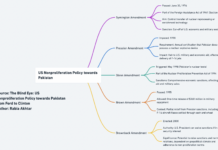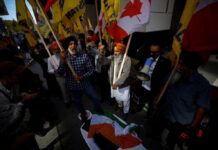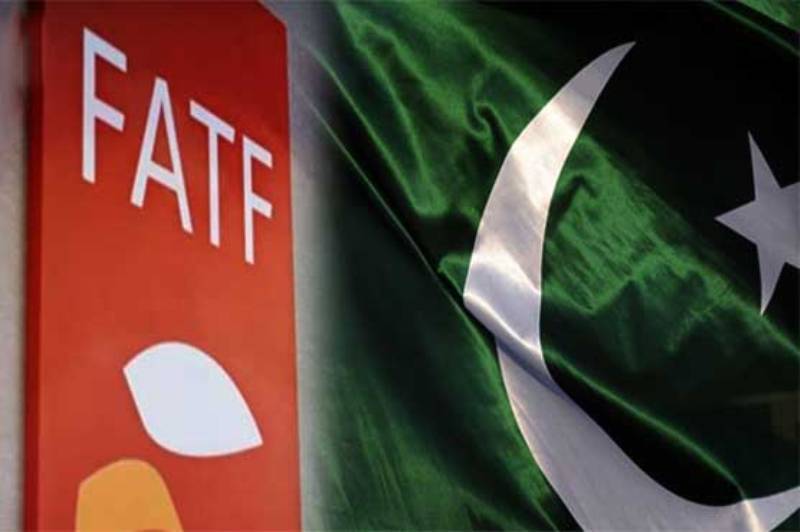Hassan Aslam Shad
Pakistan remaining in the Financial Action Task Force’s grey list, despite its unprecedented progress in implementing the 27-point action plan did not come as a surprise. There was a lurking trepidation that it would not end well for Pakistan. After all, some had predicted that world powers want to keep Pakistan in the FATF hot seat for some more time for geopolitical reasons. But despite all this, there was a tiny sliver of hope that Pakistan had perhaps done “just enough” to exit the FATF grey list.
Not quite. Pakistan’s hopes came down crashing on June 25 when FATF decided to keep it on the grey list until its October 2021 Plenary. In diplomatic verbiage, this was FATF’s polite way of telling Pakistan that it was “good” but not “good enough”. FATF has not exactly given Pakistan a “save the date” card for its October 2021 Plenary. Rather, there is a not-so-cryptic message in all this for Pakistan: this is not going to end anytime soon.
Pakistan needs to prepare – now – for what lies ahead. It is going to be a bumpy ride. It is time to fasten the seat belt. The fork in the road is all but obvious. There are two directions Pakistan can take. One that is declarative of its motive and intent and the other of compellence (the choices being thrust on it). It would not be easy from here on – but what has been in the last 74 years as far as Pakistan is concerned? More on Pakistan’s choices later but first let us unravel what has been happening at FATF.
Three years to this date, in June 2018, FATF moved Pakistan to the grey list – a not so honorable list to land on for countries in the 21st Century. The crux of FATF’s allegations against Pakistan are its failure to combat money laundering (ML) and terrorism financing (TF) through effective legislation. Failure to combat ML and TF – the global focus since the 9/11 attacks – has elicited global attention.
After being placed on the grey list in June 2018, Pakistan was handed a wish list of FATF requirements. In all fairness, Pakistan had been caught napping and was rightly pulled up by FATF. There were deep-rooted structural flaws and gaps that needed to be addressed. In the early days, Pakistan did not know what to make of FATF requirements. It reached out to ‘friendly countries’ (China, Malaysia, Turkey, etc.), to extricate itself from the grey list which did not work. It made tweaks to its domestic legislation to showcase its commitment to curbing TF and ML. Again, that did not sell. On the whole, the State did not truly understand what it had landed itself into: a complex web of rules which, if understood, could make Pakistan win half the battle.
Upon realizing the gravity of the situation, the State embarked on a far more ambitious course correction: legislation was introduced through the Parliament, newer systems that impeded the flow of funds to curb TF were introduced, and meaningful across the board reforms were implemented. All this took a while, but the State eventually got moving.
In the February 2021 Plenary, Pakistan was told that it had largely complied with 24 out of 27 FATF action points. I had back then penned a blistering polemic in these pages criticizing Pakistan for touting this as its “90% compliance”. I had said that Pakistan was playing the victim card which, on its own, would not extricate it from the FATF mess. I was partially right but, admittedly, mostly wrong. Let me explain why.
No doubt Pakistan has faltered time and again when it comes to FATF compliance. There are no ifs and buts about it. But what has come to the fore, especially after the June 25 Plenary is the malleability of the FATF rules and how these are being weaponized to ensnare Pakistan.
The statements made by the FATF President are telling. On June 25, while noting that “Pakistan has made significant progress and it has largely addressed 26 out of 27 action items on the action plan,” the FATF President pointed out a parallel review by APG – FATF’s regional partner – has also been taking place since 2019 which has identified “a number of serious issues during its assessment of Pakistan’s entire money laundering and counter-terrorist financing system”. He confirmed that a decision on Pakistan’s delisting would be taken by FATF after all items on both action plans have been fulfilled by Pakistan. Interestingly, he also mentioned that even compliance with the last remaining item would not guarantee delisting as that would only occur once APG’s parallel action plan (5 items) is implemented. FATF also reserves the right to conduct an “on-site evaluation” to determine Pakistan’s compliance.
This leaves Pakistan in terra incognita with no certainty of outcome. FATF’s insistence on keeping Pakistan on the grey list, despite its largely addressing 26 out of 27 action points and compliance with APG’s 5 items, means that Pakistan now finds itself in a maze and a room full of mirrors. Determining which way to go – or which way this will go – is now next to impossible.
If the idea is to emasculate Pakistan and bludgeon it into submission, then this makes perfect sense. If FATF’s objective was to bring Pakistan up to speed with international requirements – something I believed in – then keeping Pakistan in the grey list would not serve any purpose. To the contrary, it will make Pakistan re-think and re-imagine its future role in the international system. Even ardent internationalists like me are beginning to question FATF’s intent and purpose. These are telling signs that something does not smell right.
The June 25 FATF decision has gone in lockstep with some recent developments. The US continues to give a cold shoulder to Pakistan. Yet it has no qualms in asking for airbases while showing zero interest in developing a long-term bilateral relationship with Pakistan. Despite Pakistan’s sincere efforts in the Afghan peace process, the symphony of “do more” plays on. Pakistan’s hopes of pivoting to geo-economics as its new policy anchor are being dashed by India’s intransigence and the continuing conflict in Afghanistan . Kashmiri suffering continues unabated. Strangely, or not so strangely, the world is not interested in these. Perhaps it is not the wine that intoxicates the world.
What is next for Pakistan? Perhaps, one day FATF will tell Pakistan that its mountains are too high, and they need to be brought at par with those of other countries. This is a never ending game of cat and mouse. So, what options does Pakistan have?
Firstly, not for FATF or for the global community but for its own sake, Pakistan must diligently continue to comply with FATF’s and APG’s remaining action points. This is the bitter pill we have to swallow. There is no other way around it. In all fairness, this adversity has also shown us the mirror: we were slacking and did not keep up to speed with the changing times. Any compliance we do will eventually benefit us. Let us therefore do it for our own sake.
Secondly, Pakistan needs to realize that the ground under its feet has shifted. It is time for a “strategic reset”. The battle lines are clearly drawn out. They may read like hyperbole, but the guns are pointed at Pakistan because of the larger geopolitical jousting between US and China. Beijing has challenged Washington at the apex of its power and because Pakistan is China’s closest ally, it would be a folly to think that US and Western opprobrium would not be directed at Pakistan.
This does indeed tie Pakistan’s hands. But there are newer opportunities for Pakistan to tap into. And it starts with the neighborhood.
Pakistan must double down on efforts for a peaceful outcome in Afghanistan. A stable Afghanistan will give Pakistan access to Central Asia and open doors for regional connectivity. A change of guard in Iran also presents Pakistan with a new opportunity which it must leverage. Hawks like Ibrahim Raisi, the new President of Iran, make the best doves. Iran is wounded and would be looking for a lifeline. In line with China’s wider strategic outlook towards Iran, Pakistan should also develop a deeper strategic and economic bond with Iran. Turkey’s interest in playing a role in Afghanistan is also good news for Pakistan provided Pakistan continues to be the bellwether of the Afghan peace process and manages Turkey’s expectations. In the end, Pakistan’s best bet is to piggyback the big boys, China and Russia, both of whom will happily fill in the void left by the U.S.
Continuing to remain on the FATF grey list – for the near future or the long term – will without a doubt hurt Pakistan’s economy. To counter this, Pakistan should develop a further deeper bond with China and tie itself in the cord of mutual self-interest with regional countries and heavy weights like Russia who are gradually warming up to Pakistan. In the end, self-interest (and nothing else) is the lever that will move the world towards Pakistan.
Too much circulation makes the price go down. Perhaps Pakistan, too, diminished its value by doing the U.S. bidding on its beck and call. For a change, Pakistan is standing up for itself. This has clearly irked the U.S. But if Pakistan continues to stick to its guns, then one day, not too far in the future, Pakistan will earn respect in the world’s eyes.
History is rife with examples of invaders laying seize to the adversary to break its morale. Today’s FATF lawfare against Pakistan is aimed at severing Pakistan’s financial umbilical cord but above all, at breaking its ‘will’. But ‘will’ is not something that can be purchased off the shelf. It is innate. Pakistan has won bigger battles and, in the past, sprung on its feet from the ashes of its funeral pyre. Circumstances call for a repeat performance by Pakistan. It can and it will.
Hassan Aslam Shad is an international lawyer based in the Middle East. He is a graduate of Harvard Law School with a focus on international law.

















